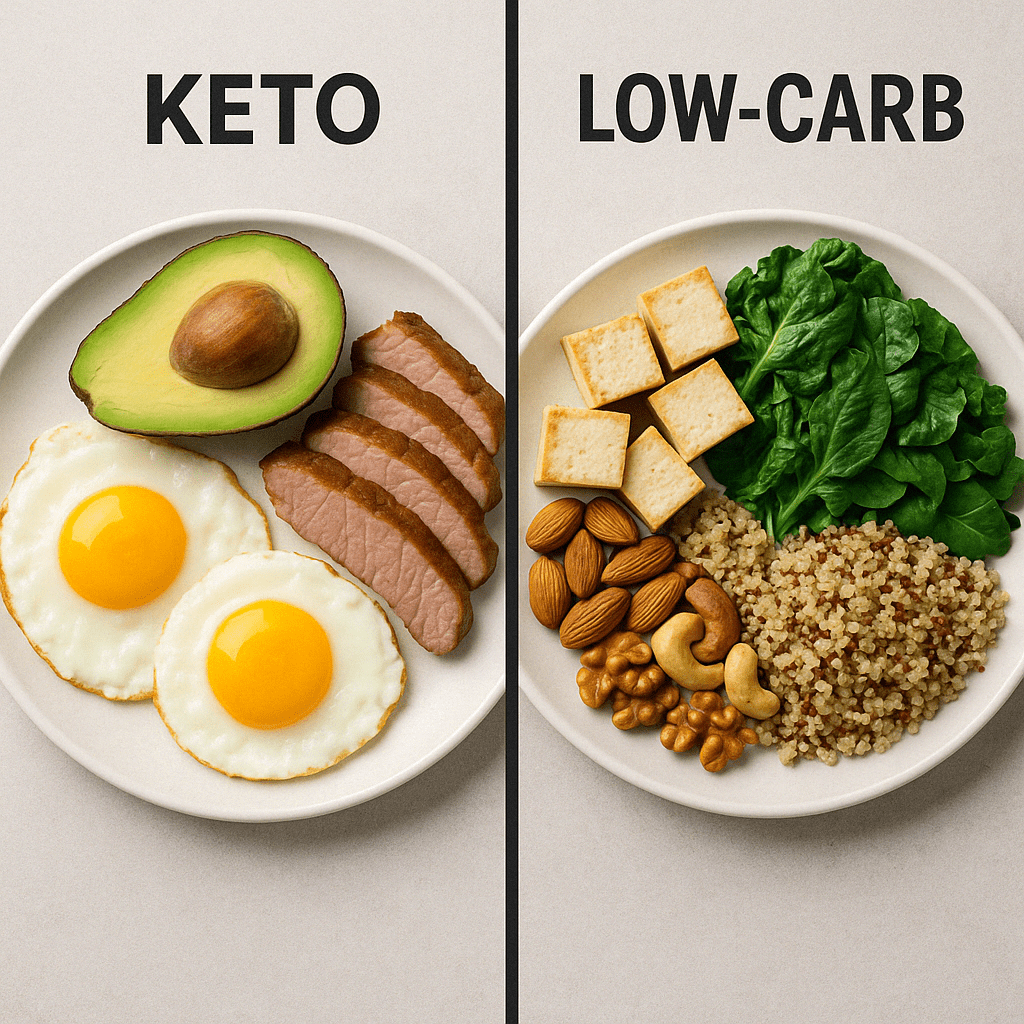In an age where convenience foods and oversized portions dominate our dining culture, the concept of cutting back eating without feeling deprived can seem elusive. For many, the pursuit of weight loss or better health often translates into extreme dieting, unsustainable restrictions, or a never-ending cycle of guilt and cravings. However, science offers a more balanced path: one that focuses on mindful, strategic choices that reduce calorie intake without diminishing enjoyment or nutrition. By understanding the physiological, psychological, and behavioral dimensions of eating, individuals can successfully navigate the journey toward healthier eating patterns and sustained well-being.
You may also like: Smart Meal Prep for Weight Loss: Expert-Approved Lunch Ideas and Recipes to Stay on Track
Understanding the Science of Calorie Reduction
Caloric balance is foundational to maintaining or losing weight. Simply put, when calorie intake consistently exceeds energy expenditure, weight gain results. Conversely, consuming fewer calories than the body needs leads to weight loss. This fundamental concept underpins nearly every effective nutrition plan, including whole-food and plant-based approaches. Yet, not all calorie-cutting strategies are created equal.
Reducing calories in a way that supports metabolic health and sustains energy levels requires careful planning. The body adapts to caloric deficits by adjusting its metabolic rate, sometimes making further weight loss more difficult. To avoid this plateau, it’s important to maintain a moderate calorie deficit—often between 250 to 500 calories per day—paired with physical activity. Strategic calorie cutting that avoids nutrient deprivation and psychological stress has been shown to result in more sustainable outcomes, especially when aligned with an individual’s long-term lifestyle.
For those wondering how many calories can I cut from cutting snacks, the answer depends largely on what types of snacks are being consumed and how frequently. Eliminating just one 200-calorie processed snack per day can lead to significant weight changes over time. Replacing that snack with a lower-calorie, nutrient-dense option like sliced cucumber or air-popped popcorn can make the transition smoother without compromising satisfaction.

The Role of Satiety and Nutrient Density
Satisfaction is often the missing ingredient in many failed dieting efforts. A critical factor in cutting back eating is to prioritize foods that promote satiety without excessive calorie intake. Foods rich in fiber, protein, and water content are especially effective at making us feel full for longer periods. Vegetables, legumes, whole grains, and fruits are particularly valuable in this context.
Whole-food plant-based diets naturally support satiety while reducing calorie density. Unlike ultra-processed foods, which are high in refined sugars, oils, and empty calories, plant-based meals offer fiber-rich, voluminous foods that nourish the body and help regulate hunger hormones. For those focused on cutting weight, emphasizing foods with a low calorie-per-bite ratio is essential. Eating a large, colorful salad with chickpeas and a lemon-tahini dressing provides substantial volume, micronutrients, and fiber without exceeding caloric goals.
It’s also worth noting that satiety is not just about physical fullness. The sensory satisfaction of eating—including flavors, textures, and presentation—also plays a key role. Adding herbs, spices, and a variety of colors to meals can elevate the eating experience, helping individuals feel more content with smaller portions.
Behavioral Strategies for Cutting Back Eating
Changing eating habits isn’t solely a matter of willpower. Psychological cues, environmental triggers, and ingrained routines often drive overeating. Becoming aware of these influences allows for more conscious decision-making around food. Mindful eating—a practice grounded in present-moment awareness and non-judgmental observation—is one of the most effective tools for reducing calorie intake naturally.
Eating without distractions such as television or smartphones improves awareness of hunger and fullness cues. Slowing down meals by putting down utensils between bites or chewing more thoroughly also enhances the eating experience and promotes natural satiety signals. Over time, individuals can train themselves to respond to actual hunger rather than emotional or environmental prompts.
Practical strategies like using smaller plates, pre-portioning snacks, and planning meals ahead of time help create a structured eating environment. When considering how many calories can I cut from cutting snacks, it’s often not just about the calories themselves but the behaviors surrounding them. Are you snacking out of boredom or true hunger? Replacing habitual snacking with alternatives like herbal tea, a walk, or a short breathing exercise can address emotional eating at its root.

Rethinking Snack Culture: Small Changes, Big Impact
Snacking has become an ingrained part of modern life. While snacks can serve a useful purpose—especially for managing blood sugar levels or bridging long gaps between meals—they often become a source of unnecessary calories. Packaged snacks are frequently high in sodium, added sugars, and unhealthy fats, contributing little to nutritional health.
Reevaluating the need for snacks throughout the day is a practical step for cutting weight without feeling deprived. Swapping processed snacks for whole-food alternatives can significantly reduce caloric intake while enhancing nutrient density. For instance, trading a 300-calorie granola bar for an apple with almond butter saves calories and adds fiber, antioxidants, and healthy fats.
It’s helpful to reframe the concept of snacking as an opportunity for nourishment rather than indulgence. If you often ask yourself how many calories can I cut from cutting snacks, begin by tracking your snack intake for a few days. This can reveal patterns and help identify areas for adjustment. Focus on snacks that combine protein and fiber—like hummus with veggies or a handful of nuts with fruit—to keep hunger at bay while maintaining energy.
Cutting Calories Without Cutting Nutrition
One of the biggest challenges in calorie reduction is avoiding nutritional gaps. It’s possible to reduce overall intake without sacrificing key vitamins and minerals—but this requires careful food selection. Plant-based whole foods provide an abundance of micronutrients per calorie, making them ideal for those cutting back eating in a smart, strategic way.
Leafy greens, cruciferous vegetables, legumes, nuts, seeds, and whole grains offer high nutrient density. Even on a reduced-calorie plan, meals can remain satisfying and nourishing with thoughtful composition. Choosing foods that offer multiple health benefits—such as sweet potatoes for fiber, vitamin A, and slow-digesting carbohydrates—maximizes nutritional return for every calorie consumed.
Supplementation may sometimes be necessary, especially for nutrients like B12, iron, or vitamin D on a predominantly plant-based plan. However, food-first strategies should remain the foundation. A colorful, diverse plate is more than visually appealing; it’s a signal that your body is receiving a wide range of phytochemicals and nutrients essential for health and vitality.

Keto, Low-Carb, and the Myth of No-Carb Diets
In recent years, the popularity of the ketogenic diet has exploded, often promoted as the ultimate solution for weight loss and metabolic health. While it is true that some individuals experience rapid results on a keto plan, the long-term sustainability and nutritional adequacy of such diets remain controversial. Is keto a good diet? It depends largely on individual goals, medical history, and how the diet is implemented.
When comparing the ketogenic diet vs low carb eating patterns, it’s important to recognize that keto requires a dramatic reduction in carbohydrates—typically less than 50 grams per day—while a standard low-carb diet may still allow for 100 to 150 grams. The low carb diet keto diet debate often centers around sustainability and side effects. Many individuals find that keto’s highly restrictive nature makes it hard to maintain, leading to cycles of restriction and relapse.
Moreover, is a keto diet sustainable for the average person? For most, the answer is no. The lack of fiber-rich fruits, legumes, and whole grains in strict keto diets can lead to digestive issues and nutrient imbalances. While keto may have clinical applications in epilepsy management or short-term weight loss interventions, it should not be viewed as a one-size-fits-all approach. Emphasizing whole, minimally processed carbohydrates in moderate amounts is often more sustainable and supports long-term metabolic health.
Is keto no carbs? Not entirely. Even the most rigid ketogenic plans include small amounts of carbohydrates from leafy greens, nuts, and low-sugar fruits. However, the overall carb intake remains far below what is recommended for optimal fiber intake and gut health. This distinction is essential when evaluating the ketogenic diet vs low carb plans and their implications for cutting weight responsibly.
Smart Substitutions That Cut Calories Naturally
Successful calorie reduction isn’t about deprivation—it’s about substitution. Small, intentional swaps can yield big results over time. Replacing full-fat dairy with unsweetened plant-based milk, choosing spiralized zucchini over pasta, or swapping soda for infused water are simple yet effective strategies. These swaps reduce calorie density without sacrificing enjoyment or cultural relevance.
For individuals navigating the low carb diet keto diet debate, making smart carbohydrate choices is crucial. Opting for quinoa instead of white rice, or lentil pasta instead of wheat-based varieties, can maintain fiber and protein intake while staying within personal carb limits. Such strategies help bridge the gap between traditional eating habits and newer health goals.
Cutting back eating also involves becoming a more conscious consumer. Reading labels, understanding ingredient lists, and identifying hidden sugars or oils can help minimize calorie creep. Whole-food plant-based eaters may find that reducing added oils in cooking is one of the most impactful changes they can make. Oils are the most calorie-dense food group, providing over 120 calories per tablespoon with minimal satiety or micronutrient value.

Preserving Pleasure and Social Connection While Eating Less
Eating is not just a biological act; it’s a deeply social and emotional experience. Meals are often tied to celebrations, traditions, and relationships. Cutting back eating doesn’t mean cutting yourself off from these joys. Instead, it involves approaching meals with mindfulness and intention, savoring each bite, and connecting with others in meaningful ways.
Dining out or attending social events can be challenging when reducing calorie intake, but it doesn’t have to be restrictive. Choosing lighter menu options, sharing dishes, or eating a small healthy snack beforehand can prevent overconsumption without dampening the experience. Bringing a healthy dish to gatherings or suggesting plant-forward restaurants can empower others to support your journey.
Mindful eating practices—like expressing gratitude before meals, engaging in conversation while chewing slowly, and pausing between servings—enhance both satisfaction and digestion. These habits make it easier to recognize fullness and reduce unconscious overeating, making cutting back eating feel less like a rule and more like a gift of presence and self-care.
Reframing Weight Loss: A Long-Term Perspective
The fixation on rapid weight loss often leads to short-term fixes that are neither healthy nor sustainable. A smarter approach centers on building lasting habits that align with personal values, medical needs, and lifestyle preferences. Cutting weight should not be synonymous with cutting joy or essential nourishment. Instead, it should reflect a holistic investment in one’s long-term health, energy, and well-being.
Tracking progress through energy levels, mood, sleep quality, and lab markers—rather than just the scale—offers a more comprehensive view of success. Reassessing goals regularly and remaining flexible in dietary choices supports a more resilient and realistic approach. Whether following a low-carb plan, exploring plant-based nutrition, or integrating principles from both, the key is to stay grounded in evidence-based practices that prioritize nourishment over numbers.
A sustainable lifestyle means learning to listen to the body, honoring hunger cues, and respecting the natural ebb and flow of appetite and energy. Cutting back eating with compassion and curiosity can unlock not only physical benefits but also a more peaceful, joyful relationship with food.

FAQ: Cutting Back Eating the Smart Way
1. What are some advanced strategies for cutting back eating in a social environment?
Successfully cutting back eating in social settings involves more than just portion control. Oneeffective technique is to subtly prioritize plant-based, fiber-rich options at gatherings—these tend to be lower in calories but high in satiety. You can also focus on engaging more in conversations and eating more slowly, which gives your body time to register fullness. When hosting or attending an event, bringing your own nutrient-dense dish allows you to contribute mindfully while modeling healthy choices. Over time, social eating becomes more about connection and less about consumption, which supports the psychological sustainability of cutting weight over the long term.
2. How many calories can I cut from cutting snacks if I replace processed foods with high-fiber options?
Swapping out processed snacks for whole-food, high-fiber alternatives can save more calories thanmost people realize. For example, replacing a 300-calorie bag of chips with a 100-calorie serving of carrots and hummus saves around 200 calories while providing more vitamins and minerals. If you do this consistently, you could cut over 1,000 calories per week—enough to influence long-term weight trends. The answer to how many calories can I cut from cutting snacks is ultimately personal, but strategic substitution offers both immediate and compounding benefits. It also supports better blood sugar control, which reduces the urge to overeat later in the day.
3. Can cutting back eating lead to muscle loss if not done correctly?
Yes, and it’s a risk that many people overlook when cutting weight rapidly. If you’re aggressivelyreducing calories without paying attention to protein intake or resistance training, muscle tissue can be broken down to meet energy needs. To prevent this, maintain adequate protein—especially from plant-based sources like lentils, tofu, and quinoa—and engage in strength-building activities. Muscle is metabolically active and essential for long-term weight maintenance, so cutting back eating should never mean cutting back on muscle preservation strategies. In fact, preserving muscle while losing fat improves overall body composition and boosts confidence.
4. What psychological factors influence how successful someone is at cutting back eating?
Emotional regulation, mindset, and self-efficacy are key psychological determinants of success.People who reframe the process of cutting back eating as a form of self-care rather than self-denial tend to stick with it longer. Mindful eating practices, journaling about food choices, and having supportive accountability partners can dramatically reduce emotional eating episodes. It’s also helpful to identify cognitive distortions—like “I ruined my diet with one snack, so the day is lost”—and replace them with balanced thoughts. Building emotional resilience in this way supports more consistent progress when cutting weight.
5. How does sleep impact the effectiveness of cutting weight through calorie reduction?
Sleep plays a crucial role in appetite regulation, hormonal balance, and metabolic efficiency.Inadequate sleep increases levels of ghrelin (the hunger hormone) and decreases leptin (the satiety hormone), making cutting back eating far more difficult. Sleep-deprived individuals often crave high-calorie, high-sugar snacks, which can sabotage efforts to cut calories. When exploring how many calories can I cut from cutting snacks, it’s important to also ask: Am I sleeping enough to support these changes? Aiming for 7–9 hours of quality sleep per night enhances decision-making and supports sustained calorie control.
6. Can cutting back eating improve digestion and gut health?
Yes, especially when done through the inclusion of fiber-rich, plant-based foods and the reduction ofprocessed, low-nutrient items. Reducing large, heavy meals in favor of smaller, more frequent portions can relieve digestive stress and support smoother gastrointestinal function. Fermented foods and prebiotic fibers—like garlic, onions, and asparagus—nourish beneficial gut bacteria. As a result, individuals cutting weight often experience less bloating, more regularity, and enhanced nutrient absorption. When cutting back eating is framed as an opportunity to improve gut ecology, the benefits extend far beyond the scale.
7. How many calories can I cut from cutting snacks if I also reduce sugary drinks?
Eliminating just one 12-ounce soda or sweetened beverage daily—which averages 140–180 caloriesadds up to roughly 1,000 calories per week. Combine this with cutting 200-300 calories per day from packaged snacks, and you’re potentially reducing your intake by up to 2,000 calories weekly. The answer to how many calories can I cut from cutting snacks becomes even more impressive when beverages are part of the equation. Switching to unsweetened tea, lemon water, or sparkling water can make a significant difference without triggering cravings. These changes often feel subtle in the moment but can result in meaningful progress when cutting weight.
8. Are there long-term metabolic benefits to cutting back eating gradually versus suddenly?
Gradual reductions in calorie intake tend to preserve metabolic flexibility and hormonal balance moreeffectively than sudden, extreme cuts. When the body senses extreme energy restriction, it may downregulate metabolism and increase hunger signals to protect against perceived starvation. A moderate, steady approach to cutting back eating not only maintains lean muscle mass but also supports hormonal regulators like thyroid hormones and insulin sensitivity. People who reduce calories slowly tend to experience fewer energy crashes, mood swings, and cravings. This makes cutting weight more sustainable and less likely to result in rebound weight gain.
9. How can I measure success beyond the number of pounds lost when cutting back eating?
Non-scale victories are powerful indicators of meaningful progress. These include improved energylevels, better sleep quality, clearer skin, more stable moods, and reduced dependence on caffeine or sugar. Increased confidence in food choices and the ability to delay gratification are also signs that cutting back eating is becoming internalized behavior. Taking progress photos, tracking body measurements, or reflecting on how clothing fits can offer additional data points beyond weight. Long-term success with cutting weight involves aligning your eating habits with your health goals and personal values—not just the number on the scale.
10. What are some future innovations that might support cutting back eating and cutting weight?
Emerging technologies and nutritional science are already beginning to reshape how we approachcalorie reduction. Smart wearable devices that monitor glucose responses or digestive health may soon allow for hyper-personalized meal planning. AI-powered nutrition coaching and real-time food logging apps can support behavior change without the need for constant willpower. Researchers are also exploring plant-based compounds that influence satiety hormones, potentially offering new tools for appetite management. As these innovations develop, they will offer even more effective and individualized pathways for cutting back eating in a sustainable, health-forward manner. This future-forward approach holds promise not just for cutting weight, but for transforming our entire relationship with food.

A Smarter Way Forward: Sustainable Eating for Health and Satisfaction
The journey toward better health doesn’t require radical overhauls or rigid dietary dogma. Cutting back eating in a smart, sustainable way begins with awareness, intention, and informed choices. Whether the goal is to reduce snacks, explore how many calories can I cut from cutting snacks, or engage with the complexities of the keto diet vs low carb debate, the guiding principle remains the same: nourish the body while respecting its signals.
While trendy diets may come and go, the science of sustainable eating is rooted in balance, variety, and mindfulness. Choosing nutrient-dense, satisfying foods; embracing behavioral strategies; and maintaining flexibility all contribute to long-term success. Health is not just about calories consumed or pounds lost—it’s about energy, vitality, and the capacity to live fully. By integrating evidence-based practices with personal values and preferences, anyone can embark on a path that supports both well-being and joy.
Ultimately, the smartest way to cut calories is not through deprivation but through informed, empowered decision-making. In this light, cutting back eating becomes less of a sacrifice and more of a strategy for thriving—one delicious, intentional bite at a time.
Was this article helpful? Don’t let it stop with you. Share it right now with someone who needs to see it—whether it’s a friend, a colleague, or your whole network. And if staying ahead on this topic matters to you, subscribe to this publication for the most up-to-date information. You’ll get the latest insights delivered straight to you—no searching, no missing out.
Further Reading:
35 Simple Ways to Cut Lots of Calories
10 ways to cut 500 calories a day
Disclaimer
The information contained in this article is provided for general informational purposes only and is not intended to serve as medical, legal, or professional advice. While NewsHealthWatch strives to present accurate, up-to-date, and reliable content, no warranty or guarantee, expressed or implied, is made regarding the completeness, accuracy, or adequacy of the information provided. Readers are strongly advised to seek the guidance of a qualified healthcare provider or other relevant professionals before acting on any information contained in this article. NewsHealthWatch, its authors, editors, and contributors expressly disclaim any liability for any damages, losses, or consequences arising directly or indirectly from the use, interpretation, or reliance on any information presented herein. The views and opinions expressed in this article are those of the author(s) and do not necessarily reflect the official policies or positions of NewsHealthWatch.

